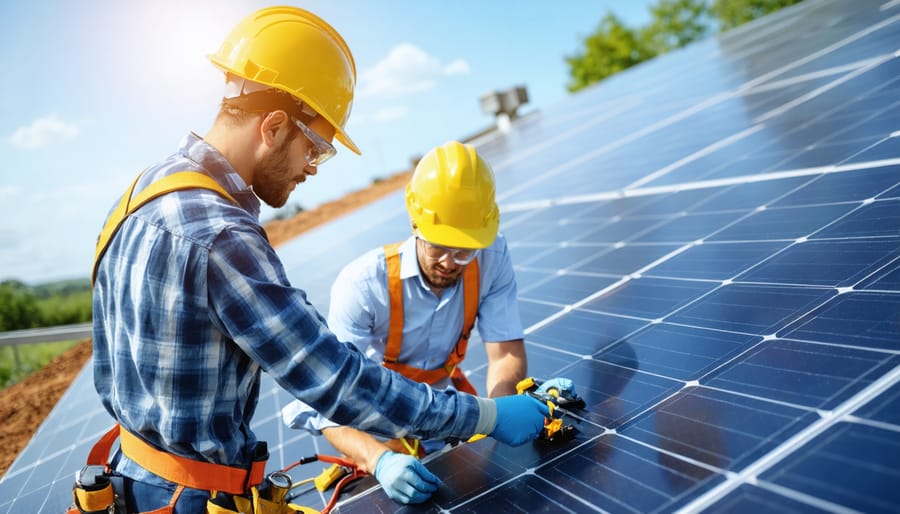As the solar industry continues to grow rapidly, more technicians and contractors are working on rooftops, electrical systems, and heavy equipment. While solar energy is a clean and sustainable power source, the process of installing solar panels can expose workers to various hazards such as falls, electric shocks, and heat stress. Following strict safety protocols not only protects installers.
Business
Safety Protocols for Solar Installers: A Comprehensive Guide
As the solar industry continues to grow rapidly, more technicians and contractors are working on rooftops, electrical systems, and heavy equipment. While solar energy is a clean and sustainable power source, the process of installing solar panels can expose workers to various hazards such as falls, electric shocks, and heat stress. Following strict safety protocols not only protects installers but also ensures compliance with government regulations and boosts customer confidence.
1. Pre-Installation Safety Planning
Before stepping onto the job site, every solar project should begin with a safety plan:
- Site assessment: Evaluate the roof or ground conditions, potential hazards, and access points.
- Risk identification: Identify fall risks, electrical hazards, weather issues, or structural weaknesses.
- Emergency plan: Establish communication procedures and identify the nearest medical facilities.
2. Personal Protective Equipment (PPE)
Every installer should be equipped with appropriate PPE:
- Fall protection gear: safety harnesses, lifelines, and anchors.
- Head and eye protection: Hard hats and safety glasses to protect from falling objects and debris.
- Gloves and footwear: Insulated gloves for handling electrical components and non-slip shoes for roof work.
- High-visibility clothing: Essential for ground installations and busy job sites.
3. Fall Protection and Working at Heights
Since most solar installations occur on rooftops, preventing falls is a top priority:
- Always secure ladders and scaffolding.
- Use guardrails, safety nets, or personal fall arrest systems where feasible.
- Maintain three points of contact when climbing.
- Keep tools organised to prevent tripping hazards.
4. Electrical Safety
Solar panels generate electricity even when disconnected from the grid. To avoid electric shock:
- De-energise circuits before starting work.
- Use lockout/tagout (LOTO) procedures for all electrical connections.
- Verify polarity and voltage before touching wires or connectors.
- Only qualified electricians should make final grid connections.
5. Weather and Heat Stress Precautions
Working outdoors exposes installers to sun, heat, wind, and rain:
- Schedule heavy work early in the morning or late in the afternoon in hot climates.
- Provide shaded rest areas and adequate drinking water.
- Use sunscreen and protective clothing to reduce UV exposure.
- Suspend work during lightning or severe weather conditions.
6. Safe Material Handling and Ergonomics
Solar panels are large and heavy. Improper handling can lead to injuries:
- Lift panels with two people whenever possible.
- Use carts or lifts for transporting heavy equipment.
- Practice proper lifting techniques—bend your knees, not your back.
Keep walkways clear of obstacles.
7. Training and Continuous Improvement
Ongoing training keeps safety standards high:
- Conduct toolbox talks before starting each project.
- Update installers on new regulations, technologies, and best practices.
- Encourage reporting of near misses or hazards without fear of reprisal.
